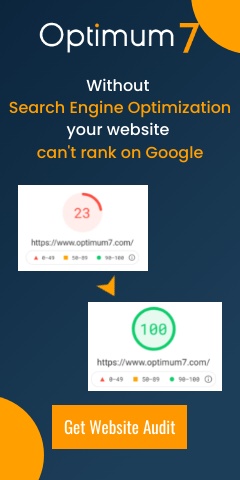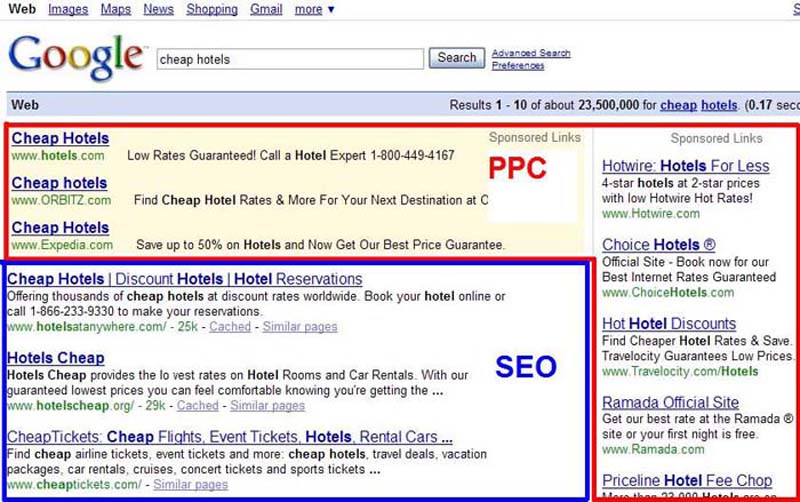 “Those who cannot remember the past are condemned to repeat it.” – George Santayana (1863-1952)
“Those who cannot remember the past are condemned to repeat it.” – George Santayana (1863-1952)
Poet and philosopher, George Santayana said it best. His wise words of wisdom have even inspired the proverbial saying of “history repeating itself”. What’s interesting to note is that the history of Google updates and consequent anxiety felt by SEOs and business owners across the board is a fine example of this popular truism. Feelings of déjà vu are all too common for many who have fallen victim to Google’s Panda-Penguin algorithm updates. What many fail to realize is that Google’s mantra really hasn’t changed over the years…
All Google has ever asked for is a commitment to Quality, Consistency and Integrity in everything you do online. So, either you are in denial or you simply haven’t been paying close attention to the commonalities amongst these updates. Don’t allow history to repeat itself again… Be prepared for the next time Google unleashes one of its zoo animals by familiarizing yourself with the rich history of SEO and noting the commonalities along the way.
Google Updates – The 4 Common Threads
First and foremost we ask that you consider the following infographic from Search Engine Journal. Google has hundreds of algorithm updates each year but for the purpose of this article we’re going to focus on the commonalties amongst the Google updates mentioned in this infographic because of the level of angst, even hysteria caused by each of them at the time of their launch.
 Penalty #1:Over-Optimization
Penalty #1:Over-Optimization
Over-optimization occurs when webmasters intentionally orchestrate their website to target select keywords. This could be anything from making your page titles too specific like “Security services in Miami, FL” or stuffing keywords into your articles and pages. Keyword stuffing is considered web spam by Google. Webmasters who deliberately arrange their website to rank for specific keywords are destined for Doomsday.
Over-optimization also includes, but is not limited to, heavy repetition and bolding of keywords in titles and on page as well as excessive use of HTML mark up. Let’s also not forget the implications of exact anchor keyword backlinks. This happens when your site gets too many backlinks with the same targeted anchor text (otherwise known as link text). So, if you have a total number of 500 backlinks and 400 of them are linking to your site with the anchor text “security services Miami”, that might be over-optimization.
Do NOT attempt to “adjust” your website either. By frantically removing keywords you’re at risk of not being optimized at all which will only lead to a faster decrease in your rankings. Keywords are still important for search engines to able to recognize and decipher your web content. All Google is asking for is that you don’t over-do it. There’s a clear line between a well optimized website and spam. Strike the perfect balance by writing naturally. Select a focus topic and really zone in on it for the entirety of the article. The keywords will naturally occur if you really know what you’re talking about and don’t stray from the topic at hand.
A majority of the Google updates in the infographic made it clear that heavy keyword usage will be penalized. Fool me once, shame on you. Fool me over and over again… really? This is quite possibly the best example of “history repeating itself” for SEOs who keep turning a deaf ear to Google’s loud drumbeat of quality updates. It’s important to learn from these updates!
Penalty #2: Unnatural Link Profiles
A natural link profile will have links from a variety of relevant sites with diverse anchor text; not repeated use or keyword focused anchor text. Having exact anchor text back to your website is another prime example of the over-optimization we mentioned above. Backlinks from irrelevant websites, hosted on the same IP and from mostly forums or blog comments might also constitute spam link building. All sorts of link manipulating schemes as well as reciprocal links (i.e. you link to me, I’ll link to you) are frowned upon by Google and will be penalized.
It’s not easy, but building a natural link profile is integral to your SEO success. Quality backlinks are obtained by consistently publishing relevant, credible and authoritative content. Write content that is so incredibly fantastic that people have no choice but to link to it… and people are more inclined to link to it “naturally” by using non-descriptive (e.g. click here), brand name (URL included) and diverse keyword links. It’s also crucial that you constantly analyze your backlink profile for spammy backlinks and trash these immediately as they will cripple your SEO efforts.
A great tool to analyze your backlink profile is Open Site Explorer. This tool allows you to see your entire list of backlinks and anchor texts. A site owner should review their site and see if it looks natural or not with this information. If there are unnatural links, its best practice to have them removed. If you cannot remove them, try to flush them out with great quality backlinks which are earned by writing great content. Google’s Webmaster Tools can also help you to review your site, analyze your backlink profile, and detect spam and technical errors! It is important to diversify your backlink profile to include different domains from different IPs. The best way to do this is via great content and public relations outreach.
Quality content and frequent examination of incoming links will set you on the right path to building a natural link profile that will increase your websites authority and protect it from Google’s next update. Again, this shouldn’t come to you as a surprise. Although many of you may have only just realized the negative consequences of a dodgy link profile after the Google Penguin hit earlier on this year, Google’s series of updates have in fact showcased the importance of all the above since the Florida Update back in November of 2003. So no excuses!
Penalty #3: Low Quality Content
Fresh, original, relevant, credible and authoritative. These are all words that should come to mind when you’re thinking about writing your next piece of content… This is because the older, less original and more generic your content is, the more likely you’re not going to succeed in your SEO goals. Taking someone else’s content and rewording it here and there (otherwise known as content spinning) won’t work either.
Quality and consistency are keys here… and surprise, surprise… Google Panda was NOT the first sign of Google’s commitment to quality content for the user either. Those who’ve paid close attention to the history of SEO have been publishing articles, blog posts, infographics, press releases, eBooks and white papers that they are proud to associate their name with on a weekly basis.
Committing to all of the above will not only yield higher user engagement but also more likes, retweets and shares across Social Media networks. One way to check user engagement and social shares is through Google Analytics. Monitor your bounce rate, time on site and pages viewed per visit to ensure your content is up to par as Google uses these measures as indicators of quality.
#4: Not Having a Social Media Presence
While it’s not a penalty per se, you’re not exactly doing yourself any favors by not actively participating in popular Social Media networks such as Facebook, Twitter, LinkedIn, Google+ and Pinterest. After all, what good is quality content when no one knows it exists? Social signals play a huge role as evidenced by the Real Time Search update in December of 2009 and Search+ Your World update in January of 2012.
The results from social networks and news sites in the SERPS mean that the “Freshness Factor” will play a large role in ranking. We also recently attended a conference in which we learned that a large proportion of employee salary at Google is determined by how well Google+ performs. So, get on it! The lesson to be learned here is that you must be present and active in Social Media or you’re at risk of falling behind the competition.
It all really boils down to QUALITY, CONSISTENCY and INTEGRITY in everything you do. If anything in your processes is dodgy, it’s got to go. Simple! Google has been trying to tell us for years that over-optimization, unnatural link profiles and low quality content is not what they’re looking for to rank and that being active on Social Media is a plus. Aside from learning from the past mistakes of others, it really just comes down to basic common sense. Google’s aim is to benefit the user by providing them with the best search results for their search query. They’ve made it clear. You won’t make it to the top by cutting any corners. You’ve really got to do the hard things… it’s the only way.
As Optimum7, we have a thorough knowledge of Google’s criteria for results. We understand that SEO is challenging and are here to help you with your Online Marketing goals. Contact Us, we can help.





